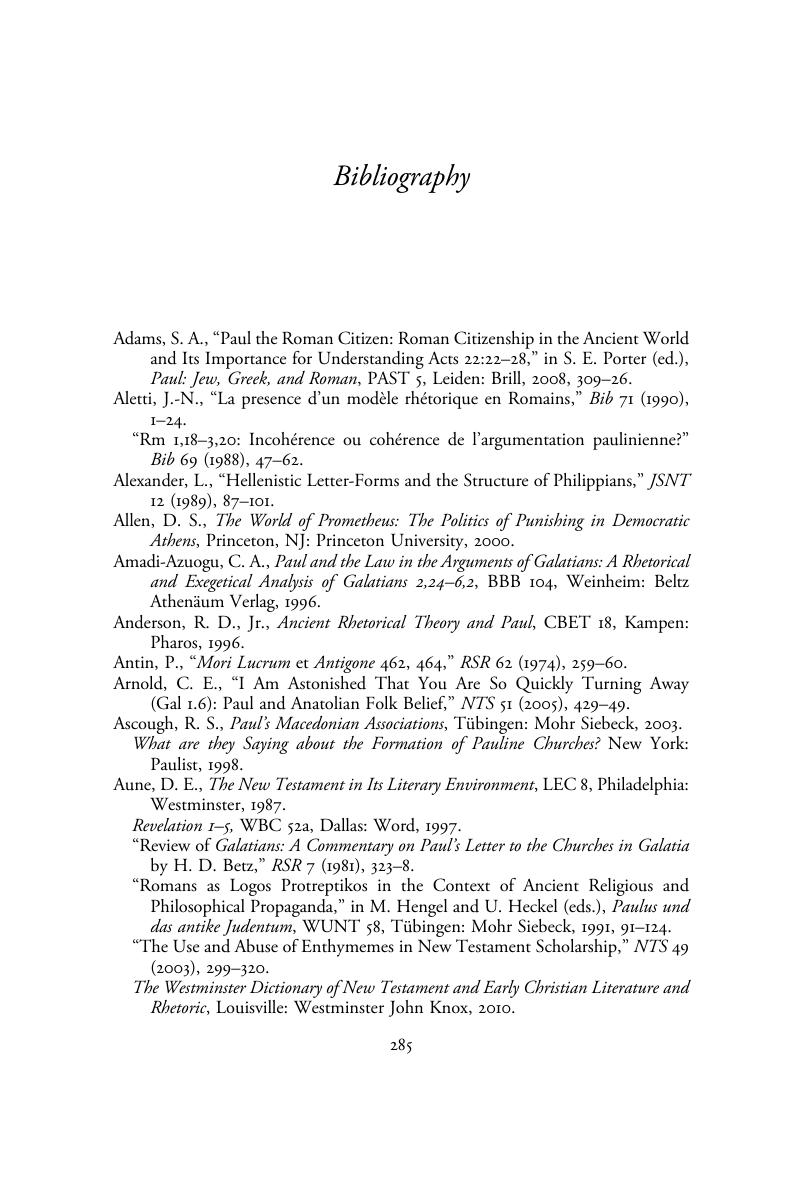Book contents
- Paul and Ancient Rhetoric
- Paul and Ancient Rhetoric
- Copyright page
- Dedication
- Contents
- Preface
- Contributors
- Glossary
- Paul and Ancient Rhetoric
- Part I History of Scholarship and Key Issues
- Part II Paul, His Education, and First-Century Culture
- Part III Issues in the Use of Ancient Rhetoric in Analyzing Paul's Letters
- Part IV Paul and Ancient Rhetoric in Practice
- Bibliography
- Ancient Sources Index
- Modern Authors Index
- References
Bibliography
Published online by Cambridge University Press: 05 November 2015
- Paul and Ancient Rhetoric
- Paul and Ancient Rhetoric
- Copyright page
- Dedication
- Contents
- Preface
- Contributors
- Glossary
- Paul and Ancient Rhetoric
- Part I History of Scholarship and Key Issues
- Part II Paul, His Education, and First-Century Culture
- Part III Issues in the Use of Ancient Rhetoric in Analyzing Paul's Letters
- Part IV Paul and Ancient Rhetoric in Practice
- Bibliography
- Ancient Sources Index
- Modern Authors Index
- References
Summary

- Type
- Chapter
- Information
- Paul and Ancient RhetoricTheory and Practice in the Hellenistic Context, pp. 285 - 313Publisher: Cambridge University PressPrint publication year: 2016



